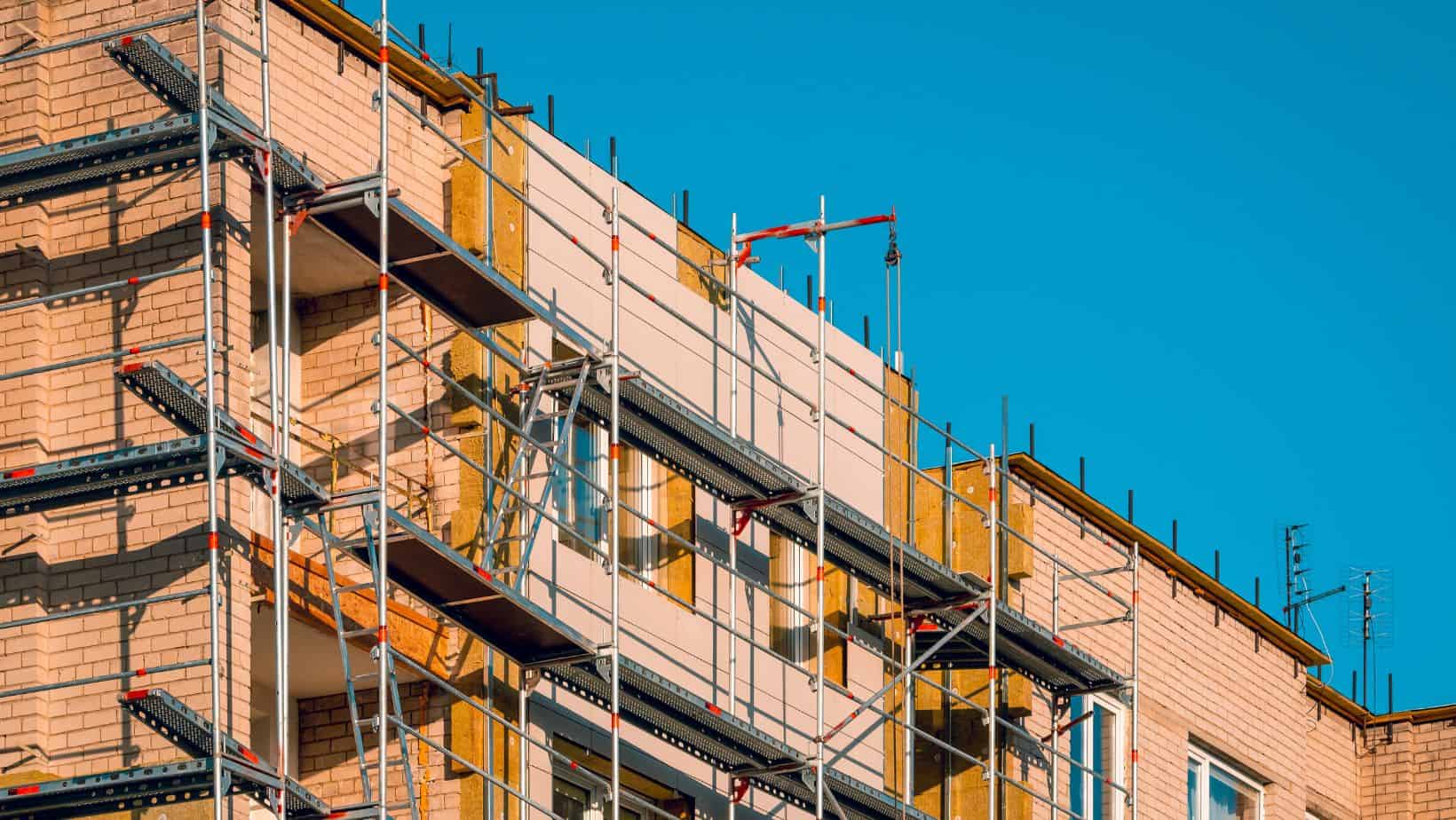Energy renovation with the climate shell at the centre
Properties can be made more energy efficient essentially in two different ways: through building- or installation technology, and usually both ways are combined. In this blog post, we concentrate on building engineering improvements.
Why invest in the climate shell?
Energy-efficient properties are well-insulated and airtight. This is rarely the case with older buildings, and in such cases, the potential for energy efficiency can be great through improved thermal insulation and air sealing of the climate shell.
Many benefits and improvements can be achieved:
A more sustainable society: All energy use involves a negative environmental impact in some form and extent. Therefore, it is always important to economize on energy resources.
More efficient energy use: A well-insulated and airtight climate shell reduces heat losses during the heating season and reduces the need for mechanical cooling when it’s hot outside.
Improved indoor comfort: Well-insulated and airtight constructions result in warmer interior surfaces and the absence of unpleasant indoor drafts, allowing indoor temperatures to be lowered while maintaining or even improving thermal comfort.
Improved protection against noise: In addition to energy efficiency, additional insulation and air sealing of the climate shell effectively reduce disturbing noise from outside, such as traffic.
More profitable property operation: Measures for improved thermal insulation and air tightness that are well technically/economically balanced immediately improve the operating profit significantly for the property owner, in fact, for the entire remaining life of the house, as maintenance costs for the measures are practically non-existent – an “eternal” return on investment!
Financing and value creation: The financing of energy efficiency measures can be facilitated by the fact that banks and financial institutions can offer favourable so-called green loans. Furthermore, a well-insulated property is worth more on the market and can be more attractive to potential buyers.
Improved thermal insulation
Improving the thermal insulation of the climate shell—additional insulation—means supplementing or replacing existing thermal insulation material with new material to an extent that is technically/economically optimal.
Different insulation materials, with different properties such as type of material, insulating ability, behaviour in case of fire, practical handling on the construction site and, not least, price/performance ratio, can be used. Some insulation materials may be better suited than others for certain applications.
The material’s ability to transport heat is called thermal conductivity or lambda value and is measured in the unit W/mK. A low value means that the material reduces heat transport more effectively than one with a higher value.
Many ordinary thermal insulation materials are found in the range of thermal conductivities of 0.03 – 0.05 W/mK. In recent years, materials with significantly lower thermal conductivity have been developed, for example, PIR insulation, aerogel and vacuum panels. These newer products are higher in price but often become profitable over time since they keep down the energy losses of the insulated structures effectively and for a long time. Vacuum panels, however, lose over time (decades) part of their extremely good thermal insulation ability due to infiltration of air.
Additional insulation in practice
For all building components in the climate shell, you can, in principle, improve the thermal insulation, but depending on what you are facing to additionally insulate, there might be something more specific to think about. In general, one should strive to additionally insulate the outside of the climate shell, because this means that the original construction then ends up in a warmer, and thus drier, climate, which is good for durability over time, among other things.
Attic floors and roofs
Attic floors are often easy to access for additional insulation, especially if it is an unfurnished attic with a proper “headroom”. Usually, additional insulation is done with loose-fill insulation of mineral wool or cellulose fibre that is blown into place. The more the space is limited in height, the more difficult the work becomes. It must be ensured that the ventilation at the eaves is ensured even after the additional insulation. To avoid moisture damage to the attic due to leakage of moist indoor air up there, it is important to try to identify and seal leaks in the joists, for example in the form of leaky pipe and duct penetrations and attic hatches. An additionally insulated attic space becomes more humid than a poorly insulated one, which means that the risk of moisture damage can increase, especially if the attic floor leaks moist indoor air into the attic space.
With low-sloping roofs, it is difficult to insulate the attic floor due to reduced accessibility and limited space for additional insulation on the upper side of the floor. One method that can then be considered is to additionally insulate the outside of the roof and convert the attic space into a warm, unventilated – and dry – space. The procedure generally works well but requires some building physics thought, and it may be advisable to seek the help of a moisture and energy expert if the procedure is being considered.
Outer walls
External walls can be additionally insulated externally or internally. From a strictly technical point of view, external additional insulation is generally preferable: the original wall construction will be warm and dry with the new, external insulation. But it is not always possible to add new thermal insulation on the outside: not least this applies to architecturally sensitive facades with a period-typical appearance and often with aesthetically valuable facade details. If you then want to improve the thermal properties of the wall, you are directed to insulate the inside of the wall. It is associated with several disadvantages. Thermal insulation becomes less effective due to thermal bridges that inevitably occur at the floor- and inner-wall connections and around windows. Furthermore, the original wall will be colder and more humid, which increases the risk of moisture and frost damage to the facade material. Finally, internal insulation naturally means that the usable surface in rooms facing the facade in question is reduced. For internal insulation, however, the costs for the additional insulation are generally lower than for external insulation, where the cost side is weighed down by the need for scaffolding and, almost invariably, a new facade material.
Similar reasoning applies to basement walls, but external additional insulation, which is technically preferable, often becomes an overly expensive option due to the need for excavation, moisture protection of the outside of the wall, ensured drainage, etc. and restoration with backfilling, planting/paving or the like. Basement walls can be insulated internally, and then inorganic insulation material, steel studs and plasterboard as interior cladding are used. Vapour barriers are usually omitted to avoid moisture accumulating in the wall, and an air gap is left between the insulated studs and the original basement wall.
Floors
Cold and drafty floors can be very uncomfortable. Therefore, it is not uncommon to want to fix such constructions with additional insulation. Even in terms of operational economics, it can be tempting to try to reduce heat losses in floor constructions. Regarding the practical conditions for improving the floors´ thermal insulation and air tightness, the conditions differ significantly between slab-on-ground type floors and crawl space floors.
The slab-on-ground type floors are practically difficult to remedy because the remedy entails that all doors and thresholds must be adjusted in height in connection with the additional insulation. Even in terms of moisture, insulating on the upper side of the floor can be adventurous because the intervention can lead to underlying layers in the original floor construction ending up in a new and unfavourable climate with the risk of mould growth or the like.
Crawl space floors are additionally insulated relatively easily from below if only the height of the crawl space is sufficient for it to be practically and technically possible. However, such an intervention affects the heat and moisture balance in the crawl space: It becomes colder and more humid for a large part of the year, which affects the risk of damage to moisture-sensitive materials such as wood exposed to the crawl space climate. The risk of frost heave of the foundation walls due to the lower temperature in the crawl space may also need to be considered. As a positive consequence of insulating the underside of the crawl space floor, however, one must note, not only that the heat losses through the joists are reduced. In addition, the original floor construction becomes warmer and drier.
It is also possible to thermally insulate the bottom of the crawl space, for example, with lightweight aggregate, and the walls of the crawl space with insulation boards, and at the same time close the outside air vents. Instead, the crawl space is ventilated mechanically with indoor air, which then leaves the crawl space as exhaust air to the outdoors. You then get a so-called warm crawl space with a favourable warm and dry climate, on the condition that you never, for example, due to pipe leakage or external flooding, get any water penetration that gives rise to water evaporation from the crawl space bottom. One should also be aware that high levels of soil radon can occur in such an unventilated crawl space, with the risk that the radon level in the home can reach dangerous levels if the sub-soil on the site is radon-rich.
BIM Energy Renovation – the ultimate guide
Planning for successful energy efficiency improvements means clarifying the energy, technical, and economic consequences of several alternative measures and combinations of measures. BIM Energy Renovation offers the best and most flexible tool on the market today to help you choose the best solutions for your needs.




